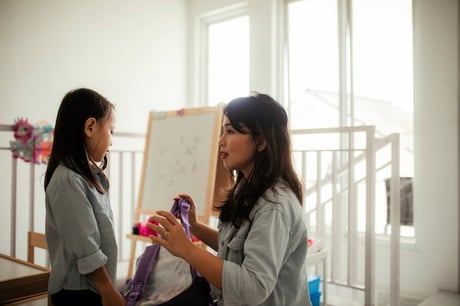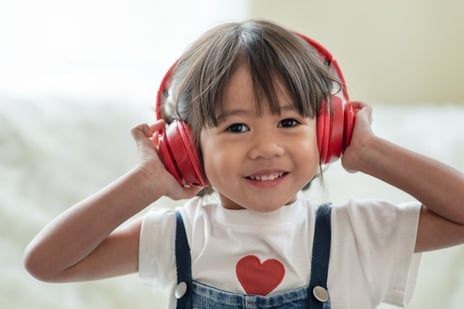How to Build an Autism Kit for On-the-Go
An Autism Kit, also known as a “Calm Down Kit,” “Sensory Kit” or “Autism Survival Kit” is an invaluable tool for any parent of an autistic child.
If you’ve ever been away from home with your autistic child and found yourself wishing you had a magic bag of items to pull from to help them in a moment of distress, then you might benefit from creating an On-the-Go Autism Kit. This is a small bag or backpack that you can easily carry with you, or your child can carry for themselves, that is designed to meet as many needs that might arise as possible while out in the community.
Your On-the-Go Autism Kit can come in a variety of sizes, including a simple slingback with the essentials, a fuller bag that you keep in the car for emergencies, or a small bag with necessary sensory fidgets that you slip into a larger backpack. It is even a good idea to have each of these types of kits for a variety of occasions, so you can always be prepared. But what do you put inside an On-the-Go Autism Kit?

As a parent, you probably already have some good ideas of what items help your child feel safe and calm that are good to bring along on a trip. However, if you want to make sure your kit is as complete as possible, here are some simple guidelines.
Four Areas of Need
What you want to focus on are four key areas of need for autistic individuals:
- Sensory
- Communication
- Executive Functioning
- Emotional Regulation
1. Sensory
Sensory is a big one, as most autistic kids have very particular sensory needs, and going out into the world where there are unpredictable environments can be incredibly overwhelming. The best bet to make sure your kit is complete is to systematically go through all eight sensory systems, think about how they relate to your child, and how they might impact your child when outside the home.
-
Interoception
The first place you want to start is a sense called Interoception. Most people are unfamiliar with interoceptive senses but it’s a great place to begin because it covers basic needs that we would want to attend to anyway. Interoception is the body's ability to sense internal feelings, such as hunger, thirst, temperature, needing to use the bathroom, and even emotions.
Many autistic individuals struggle with interoception and can’t always tell what their bodies are signaling they need. But we all know that being hungry, thirsty, too hot or cold, or having to use the bathroom urgently can upset our mood. If you know these factors are likely something to come into play for your child, and especially if they might not be able to tell it’s happening or communicate it with you, it’s good to be prepared. At the most basic level, you can add some quick snacks and a bottle of water to the kit. You can also add an extra jacket or a miniature handheld fan to anticipate fluctuations in temperature becoming a source of distress.
-
Sound, Sight, Taste, Touch and Smell
Next, you want to consider the five basic senses we all know - sound, sight, taste, touch, and smell. Or in more technical terms: auditory, visual, gustatory, tactile, and olfactory.
Many autistic children are sensitive to sound, so being prepared could include always having a pair of noise-canceling earbuds or headphones in your kit. Your child may also be sensitive to visuals such as bright lights, so having sunglasses or a baseball cap may be a good idea. You probably know your child’s sensitives better than anyone, so think of what kinds of things you might encounter in different environments and how you can come up with a solution to help your child eliminate or reduce sensory overwhelm.
When it comes to sensory systems, it’s important to play both offense and defense. Defense means protecting against sensory experiences that might cause stress and dysregulation, with items like noise-canceling headphones or sunglasses. Playing offense means including items that provide positive sensory experiences that help regulate your child. This could be items such as different types of fidgets, a soft cloth with a texture they enjoy, a chime that makes a noise they find calming, or a chewable necklace. Defensive items can also double as an offense - your child might like to wear noise-canceling earbuds as a default, rather than only when things get too loud because they find a quieter world to be calming in general. Make sure you go through all the senses and think about how they impact your child in both regulating and dysregulating ways.

-
Sense of Body in Space and Sense of Balance
Lastly, don’t forget to include the final two senses - proprioception (sense of body in space) and vestibular (sense of balance). Some items that could help regulate these sensory needs are weighted lap pads, compression shirts, or an exercise band to loop around the legs of a chair when sitting for prolonged periods.
2. Communication
Next, we move on to communication. If your child is non-speaking, you already know how important it is to always have their communication device, whether that be a PECS book or AAC tablet, easily accessible. However, even for verbal-autistic children, it’s important to provide alternative forms of communication. When an autistic child is distressed, it becomes harder to communicate, so having other modes available is always helpful.
At the very least, your child should always be able to communicate basic needs like hunger, thirst, and pain, as well as sensory needs like it being “too loud” or “too bright” or “tastes bad” or “smells funny”, and simple “yes”, “no”, and “stop” commands to others. Even for speaking children, it would be handy to have some sort of alternative communication for these needs, such as a laminated sheet with different options they can point to or a ring of flashcards attached to their bag. If your child is starting to feel bad but isn’t sure why, you can go through some of these options together with them and it will help them identify their needs more easily, especially if paired with visuals.
You might also consider packing something like communication badges. These badges are designed to signal how the wearer wants to interact with others and are useful in social settings. Red means they don’t want to talk to anyone right now, yellow means they only want to talk to certain people (like family or friends), and green means they are open to interacting with anyone. Some people also use communication badges to indicate their energy level, i.e. if they are completely burnt out and need some quiet and space or if they are full up and ready for the next activity. Of course, communication badges work best when others know what they mean or multiple people are wearing them, so it isn’t a bad idea to keep a few pairs in the kit and introduce this tool to friends or family at social gatherings.
Other useful tools for autistic people that could be kept for on-the-go include communication cards with “scripts” for different interactions. Sometimes autistic individuals find it difficult to know what to say in certain situations, so “scripts” act as a guide for what they should say and/or what others might say to them. If you have an older child who is practicing some independent activities such as going to the post office or bank, having a “script” handy that they can read over could ease much of the anxiety in the process. Scripts can be easily kept and even written on the fly in a notebook or put on small flashcards for quick access, either of which fits nicely into a backpack.
3. Executive Functioning
When considering your child’s needs and what is useful to have for on-the-go, executive functioning is a big factor. Executive functioning is the ability to plan and execute actions and involves skills such as organization, working memory, and impulse control. One tool that is often helpful for autistic children is a visual schedule. This helps them know what is happening and feel at ease and enables them to predict their day and know what they need to do. There are countless ways to make easily transportable visual schedules that could fit into your kit, and even simply having a notebook or dry-erase board that you could write or draw on at a moment’s notice as needed can be a lifesaver.
Another great tool is a visual timer. There are many different visual timers on the market and small ones that are easy to carry with you. These can help a child know how long an activity will take or ease through transitions by showing them how much time is left.
One possible issue with executive functioning is the tendency to misplace or lose items more frequently. If that’s the case for an autistic person in your life, it may be possible to use their kits to help them work around this problem. For example, if your child can go out on their own and has their own house key but frequently forgets or misplaces it, a simple solution is to make copies and keep one key copy in each On-the-Go kit that they use, to increase the chances of always guaranteeing a spare when needed.
4. Emotional Regulation
When thinking about emotional regulation while on the go, you want to combine all of the above three elements to create a complete toolkit for your child. It is much easier for an autistic child to regulate their emotions when:
- their sensory needs are met,
- their communication is honored and easy for them to express,
- and have a sense of routine and knowing what to expect.
You can include in your kit special items specifically for emotional regulation, such as a glitter bottle that your child finds calming (sensory), the option of a flash card to say they need to take a break (communication), and a visual aid that helps them work through taking deep breaths or counting to ten while watching the glitter bottle (executive functioning).
Having tools such as these handy makes it much easier to attune to your child’s feelings and help them through difficult moments than if you were to simply try to calm them down off the cuff or without any regulating items. Helping your child build their On-the-Go Autism Kit and using it with them when out in public also teaches them invaluable skills:
- how to notice and attend to their own needs,
- prepare for outings,
- and self- or co-regulate.
In addition to autism-specific items, it’s not a bad idea to include some regular on-the-go tools, such as a first aid kit, a flashlight, or duct tape. You never know when you might need it or if having these handy could help save the day from a meltdown.
These are just a few suggestions of the kinds of items that can be kept in an On-the-Go Autism Kit. Of course, countless other items could be included, since each autistic individual is unique and has their own needs and preferences. The key is to think about what autism means to your specific child - in the key areas such as sensory, communication, executive functioning, and emotional regulation - and then prepare accordingly with anything that will help them have a safe, relaxed, and fun experience outside the home!
For a ready-made sensory kit - see the STAGES® Learning Sensory Builder Kit

Christa Mullis
Christa Mullis is an Autism Accessibility Specialist and educational coach for teens and young adults on the spectrum. She is also the founder of Spectrumize: Organization for Autism Accessibility (https://spectrumize.net/), where she helps families, educators, and community members create homes, classrooms, and public spaces that are accessible and accommodating to autistic individual’s unique strengths and needs. Christa received her Master’s degree in Educational Development with a focus in Special Needs and Inclusive Education from Hiroshima University’s Graduate School of International Development and Cooperation. She has worked with autism communities around the world and hopes to continue making positive changes in recognizing the strengths of autistic children and creating a more welcoming world for them to thrive.





